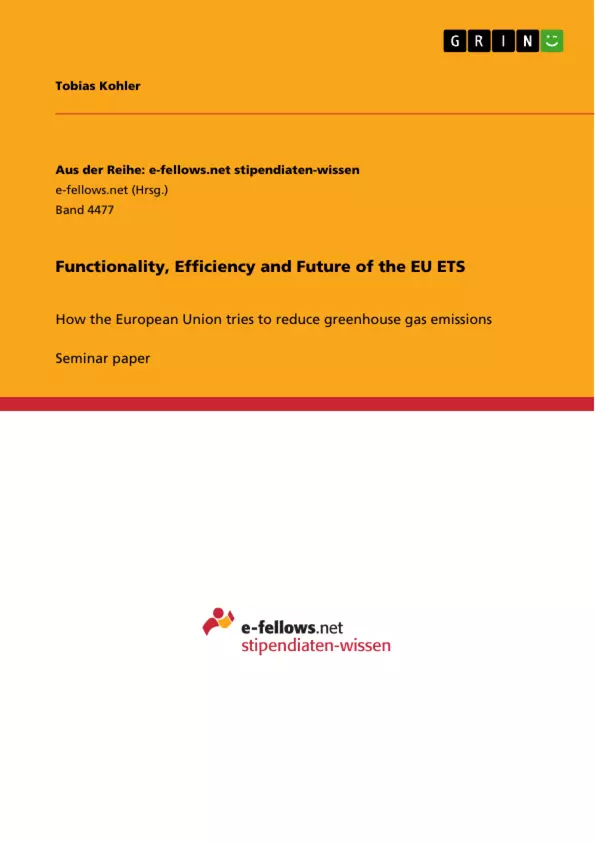In this undergraduate research paper, the author describes how the European Union Emissions Trading Scheme (EU ETS) works and shows that the "cap and trade" system leads to inefficient outcomes due to over-allocation and price volatility.
Inhaltsverzeichnis (Table of Contents)
- I. Introduction
- II. How the EU ETS works
- III. Success of the EU ETS
- IV. Remaining Issues
- V. Why the EU ETS is not a global remedy
Zielsetzung und Themenschwerpunkte (Objectives and Key Themes)
This paper analyzes the functionality, efficiency, and future of the EU Emissions Trading Scheme (EU ETS), a significant system aiming to reduce greenhouse gas emissions in the European Union.
- The functioning of the EU ETS, including the "cap and trade" system and allocation of allowances
- The success of the EU ETS in reducing emissions and its economic impact
- Challenges faced by the EU ETS, such as overallocation, price volatility, and fraud
- The limitations of the EU ETS in achieving global emissions reduction goals
- Potential solutions for improving the effectiveness of the EU ETS
Zusammenfassung der Kapitel (Chapter Summaries)
- Chapter I: Introduction This chapter sets the stage for the paper by highlighting the increasing concern over global warming and the role of greenhouse gases. It introduces the Kyoto Protocol and the EU ETS as a response to these concerns.
- Chapter II: How the EU ETS works This chapter details the functioning of the EU ETS, explaining the "cap and trade" system, the allocation of allowances, and the incentives for reducing emissions. It also discusses the different phases of the EU ETS and the evolution of the allocation system.
- Chapter III: Success of the EU ETS This chapter analyzes the success of the EU ETS in reducing greenhouse gas emissions. It highlights the positive impact of the scheme on emissions reduction and its economic efficiency.
- Chapter IV: Remaining Issues This chapter addresses the challenges faced by the EU ETS, including issues of overallocation, price volatility, and fraud. It explores potential solutions to address these problems and ensure the long-term effectiveness of the scheme.
Schlüsselwörter (Keywords)
The core concepts of this paper revolve around the EU ETS, greenhouse gas emissions, carbon dioxide, "cap and trade" system, allowances, overallocation, price volatility, fraud, economic efficiency, and global climate change. The work explores the functionality and effectiveness of the EU ETS as a mechanism to combat climate change, highlighting its strengths, weaknesses, and potential improvements.
- Quote paper
- Tobias Kohler (Author), 2013, Functionality, Efficiency and Future of the EU ETS, Munich, GRIN Verlag, https://www.grin.com/document/269286



